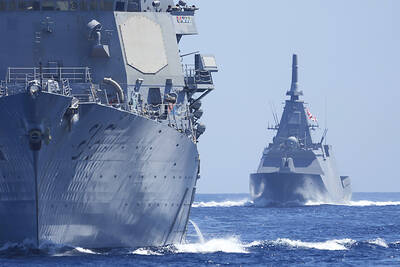In fishing and speed boats, the people of this small Indian village headed into the stormy waters off British Columbia's north coast to help rescue 101 passengers and crew from a large British Columbia ferry that hit a rock and sank.
By late on Wednesday night, 99 passengers and crew were accounted for, but BC Ferries was unable to locate two passengers, a man and woman. George Foisy of Terrace, British Columbia, said that his brother Gerald Foisy and Gerald's common-law wife, Shirley Rosette, remained unaccounted for.
Ferry officials insist that everyone got off the ship and have speculated the couple returned to Prince Rupert from Hartley Bay on their own, although the village is inaccessible except by air and boat. Ferry officials handed the matter over to police as a missing persons case.
David Hahn, the president of BC Ferries, called the orderly rescue from the ferry's lifeboats, and the fact that no one was seriously hurt during the early Wednesday morning incident, miraculous.
"Anytime you have a major incident and you have no one hurt or killed in this type of thing, I think you always think it's a miracle," Hahn said.
Canadian coast guard spokesman Dan Bate said the southbound Queen of the North struck a rock without warning at 12:26am off Gil Island in Wright Sound, about 32km south of Hartley Bay. The area is about 129km south of Prince Rupert and about 933km northwest of Seattle.
Passengers and crew aboard the 123m ship began boarding life rafts less than half an hour later, then were taken aboard local boats and the Canadian icebreaker Sir Wilfred Laurier with no reports of significant injury or other physical distress, Bate said.
Weather at the time was reported to be 72kph winds with choppy seas.
The ferry, part of the province's extensive marine transport service, had left Prince Rupert at 8pm for the overnight run to Port Hardy at the northern tip of Vancouver Island.
One passenger told Canadian Press she at first thought she was in the middle of a drill.
"And then when they said to go to the other side of the boat, we knew it was real," said Jill Lawrence. "But it was very calm. Everyone seemed very calm and the crew did an awesome job to get us off."
"We heard a crashing noise and the ship went to one side," passenger Lawrence Papineau said.
"Then it was a louder crash ... and then everybody realized what was happening and the sirens went off. Within an hour, the ship actually tilted to the side, leveled out and it sunk down to the sixth deck, came back up like the Titanic, dipped and then it went under," he added.
Some ferry passengers with minor injuries were flown by helicopter from Hartley Bay to Prince Rupert, said Hartley Bay resident Wally Bolton, who was helping the rescued at the cultural center. He said he was aware of one person with a head injury.

A fire caused by a burst gas pipe yesterday spread to several homes and sent a fireball soaring into the sky outside Malaysia’s largest city, injuring more than 100 people. The towering inferno near a gas station in Putra Heights outside Kuala Lumpur was visible for kilometers and lasted for several hours. It happened during a public holiday as Muslims, who are the majority in Malaysia, celebrate the second day of Eid al-Fitr. National oil company Petronas said the fire started at one of its gas pipelines at 8:10am and the affected pipeline was later isolated. Disaster management officials said shutting the

US Vice President J.D. Vance on Friday accused Denmark of not having done enough to protect Greenland, when he visited the strategically placed and resource-rich Danish territory coveted by US President Donald Trump. Vance made his comment during a trip to the Pituffik Space Base in northwestern Greenland, a visit viewed by Copenhagen and Nuuk as a provocation. “Our message to Denmark is very simple: You have not done a good job by the people of Greenland,” Vance told a news conference. “You have under-invested in the people of Greenland, and you have under-invested in the security architecture of this

UNREST: The authorities in Turkey arrested 13 Turkish journalists in five days, deported a BBC correspondent and on Thursday arrested a reporter from Sweden Waving flags and chanting slogans, many hundreds of thousands of anti-government demonstrators on Saturday rallied in Istanbul, Turkey, in defence of democracy after the arrest of Istanbul Mayor Ekrem Imamoglu which sparked Turkey’s worst street unrest in more than a decade. Under a cloudless blue sky, vast crowds gathered in Maltepe on the Asian side of Turkey’s biggest city on the eve of the Eid al-Fitr celebration which started yesterday, marking the end of Ramadan. Ozgur Ozel, chairman of the main opposition Republican People’s Party (CHP), which organized the rally, said there were 2.2 million people in the crowd, but

JOINT EFFORTS: The three countries have been strengthening an alliance and pressing efforts to bolster deterrence against Beijing’s assertiveness in the South China Sea The US, Japan and the Philippines on Friday staged joint naval drills to boost crisis readiness off a disputed South China Sea shoal as a Chinese military ship kept watch from a distance. The Chinese frigate attempted to get closer to the waters, where the warships and aircraft from the three allied countries were undertaking maneuvers off the Scarborough Shoal — also known as Huangyan Island (黃岩島) and claimed by Taiwan and China — in an unsettling moment but it was warned by a Philippine frigate by radio and kept away. “There was a time when they attempted to maneuver